If you’re a bearded dragon owner, you’ve likely asked yourself this common question: can bearded dragons eat cabbage? With so many vegetables available, it’s important to know which ones are actually safe—and which should be avoided or only offered in moderation. Cabbage might seem like a healthy choice, but can bearded dragons eat cabbage without any risks? In this article, we’ll dive into the nutritional facts, potential benefits, and hidden dangers of feeding cabbage to your scaly friend. Whether you’re a new owner or a seasoned reptile keeper, understanding how cabbage fits into a balanced diet is key to keeping your bearded dragon healthy and thriving.
What You Need to Know About Feeding Cabbage to Bearded Dragons
Cabbage is a common vegetable in many households, but that doesn’t automatically make it safe for reptiles. When it comes to feeding cabbage to bearded dragons, there are several important factors to consider—including their natural diet, nutritional needs, and how cabbage fits into their overall feeding plan. Let’s explore what every owner should know before adding this leafy green to their beardie’s bowl.
Understanding the Bearded Dragon Diet in Captivity
In captivity, bearded dragons (Pogona vitticeps) thrive on a carefully balanced omnivorous diet. Unlike their wild counterparts, which hunt for live insects and graze on available vegetation, pet dragons rely entirely on what their owners provide. A healthy captive diet typically consists of about 70% plant matter and 30% animal protein for adults, with the ratio reversed for juveniles. This includes a mix of leafy greens, vegetables, and occasional fruits, alongside live insects like crickets or dubia roaches. Understanding these dietary foundations is essential before introducing new foods like cabbage. Every item in their bowl must serve a purpose—supporting digestion, hydration, calcium intake, and energy levels. Improper feeding can lead to metabolic bone disease or other long-term health issues. That’s why it’s critical to evaluate whether cabbage truly belongs in a beardie’s regular diet.
Common Vegetables in a Bearded Dragon’s Diet
Bearded dragons benefit from a variety of vegetables, especially those rich in calcium and low in harmful compounds like oxalates. Safe, staple veggies include collard greens, mustard greens, dandelion leaves, and squash. These leafy greens and root vegetables provide vital nutrients while keeping phosphorus levels in check. Reptile-safe vegetables like bell peppers and carrots can be offered occasionally, though moderation is key. Avoid feeding high-oxalate or high-goitrogen vegetables regularly, as they may interfere with calcium absorption and thyroid function. Offering a colorful variety ensures your bearded dragon receives a wide spectrum of vitamins and minerals. Before adding new vegetables like cabbage, it’s important to understand how they compare nutritionally to these commonly accepted options.
Before adding new vegetables like cabbage, it’s important to understand how they compare nutritionally to other options like cucumbers.
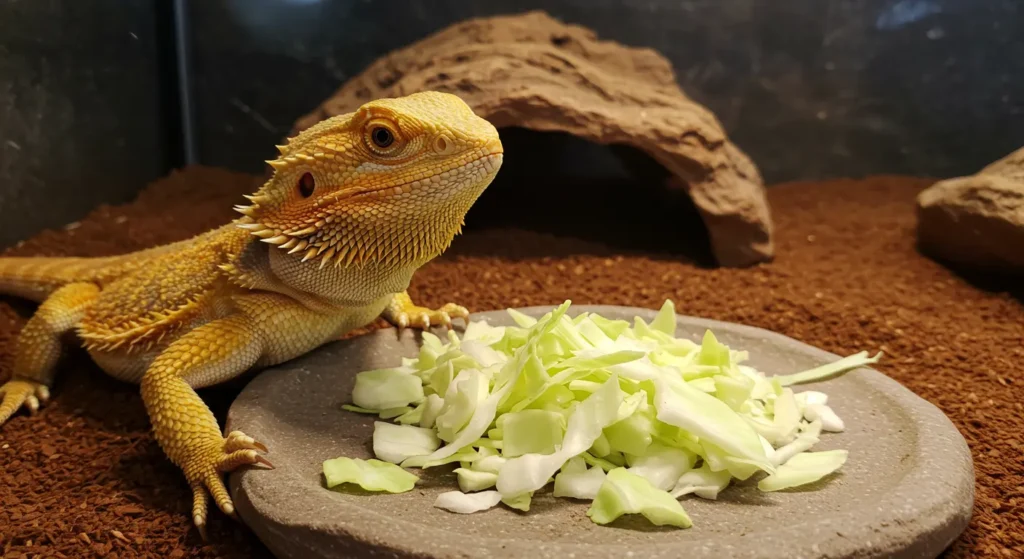
Where Does Cabbage Fit In?
Cabbage is often considered a healthy vegetable for humans, but where does it fit in when feeding bearded dragons? The answer isn’t so simple. While cabbage contains vitamins like K and C, it also belongs to the cruciferous vegetable family—known for its goitrogens. These compounds can interfere with thyroid function in reptiles if fed too often. Additionally, certain types of cabbage are higher in oxalates, which may block calcium absorption. This doesn’t mean cabbage is completely off-limits, but it should never be a daily staple. In small amounts and with the right type, it may be safe. Still, it’s essential to compare cabbage to other vegetables in your beardie’s diet to decide if it’s worth including at all.
Nutritional Profile of Cabbage and Its Impact on Reptile Health
Cabbage may seem like a nutritious option at first glance, but its true value in a bearded dragon’s diet depends on what’s inside. To understand its impact on reptile health, we need to break down the nutrients cabbage contains—along with the potential risks hiding behind its leafy appearance. Let’s explore how each component can affect your bearded dragon’s well-being.
Key Nutrients Found in Cabbage
Cabbage is rich in several nutrients that may benefit bearded dragons when fed occasionally and in moderation. It contains vitamin K, which supports healthy blood clotting and bone development. You’ll also find a modest amount of vitamin C, fiber, and water content, which aids hydration and digestion. Cabbage does contain calcium, but not in high enough amounts to meet a bearded dragon’s daily needs. More importantly, it has phosphorus, which can become problematic when it outweighs calcium. The calcium-to-phosphorus balance in cabbage is not ideal for reptiles. This imbalance can prevent proper calcium absorption over time. While these nutrients may seem beneficial on the surface, it’s essential to understand how they interact within your dragon’s overall diet. Cabbage provides value—but not without trade-offs.
Goitrogens and Their Effect on Thyroid Function
One of the main concerns with feeding cabbage to reptiles is its goitrogen content. Goitrogens are naturally occurring compounds found in cruciferous vegetables like cabbage, kale, and broccoli. In large or frequent amounts, goitrogens can interfere with iodine absorption. This affects the function of the thyroid gland, which regulates metabolism. For bearded dragons, poor thyroid function can lead to sluggish behavior, poor growth, or hormonal imbalances. While goitrogens aren’t dangerous in small quantities, feeding high-goitrogen foods too often increases the risk of long-term health issues. If you’re including cabbage in your bearded dragon’s diet, it’s crucial to balance it with iodine-rich vegetables and limit how often it’s served.
Oxalates and Calcium Absorption in Bearded Dragons
Cabbage also contains oxalates, which can bind to calcium and block its absorption in the digestive system. In reptiles like bearded dragons, this is a serious issue. When oxalates interfere with calcium uptake, the body may pull calcium from the bones instead. Over time, this can lead to metabolic bone disease (MBD)—a painful and often irreversible condition. Symptoms of MBD include swollen limbs, tremors, poor appetite, and skeletal deformities. Although cabbage is not the highest-oxalate vegetable, its regular inclusion in the diet—especially without proper calcium supplementation—can contribute to the problem. To keep your bearded dragon safe, only feed cabbage in small portions and pair it with high-calcium foods.
Balancing the Calcium-to-Phosphorus Ratio
Reptiles require a calcium-to-phosphorus ratio of about 2:1 to support healthy bones and prevent deficiencies. Unfortunately, cabbage has a reversed ratio—with more phosphorus than calcium. When this imbalance occurs regularly, calcium absorption is blocked, and the risk of nutritional disorders increases. This is especially harmful for growing juveniles and gravid females. You can’t rely on cabbage alone to meet calcium needs. To protect your bearded dragon, always pair low-calcium foods with calcium-rich greens like collards, dandelions, or turnip greens. Supplementing with calcium powder (without phosphorus) is also a smart way to maintain the right balance. Cabbage can be a part of the diet—but only if the calcium-to-phosphorus ratio is addressed carefully.
Is Cabbage Safe for Bearded Dragons to Eat Occasionally?
Cabbage isn’t completely off-limits for bearded dragons, but it’s not a go-to staple either. To determine whether it’s safe to feed occasionally, we need to look at how it’s prepared, how often it’s offered, and how your dragon reacts to it. This section breaks down when and how cabbage can be included without risking your pet’s health.
The Verdict on Raw vs. Cooked Cabbage
Bearded dragons can eat both raw and cooked cabbage, but there’s a clear preference when it comes to safety. Raw cabbage is more commonly offered because cooking can reduce some of the nutrient content. However, lightly steaming cabbage may lower its goitrogen and oxalate levels, making it easier to digest. This is especially useful for young or sensitive reptiles. That said, avoid using oils, spices, or salt—plain cooking only. Keep in mind that cabbage is a cruciferous vegetable, and even cooked, it may still affect calcium absorption or thyroid health. Whether raw or steamed, always serve cabbage in small, finely chopped portions. And as with any vegetable in a reptile’s diet, variety and moderation are key. Rotate cabbage with other safe greens to ensure nutritional balance.
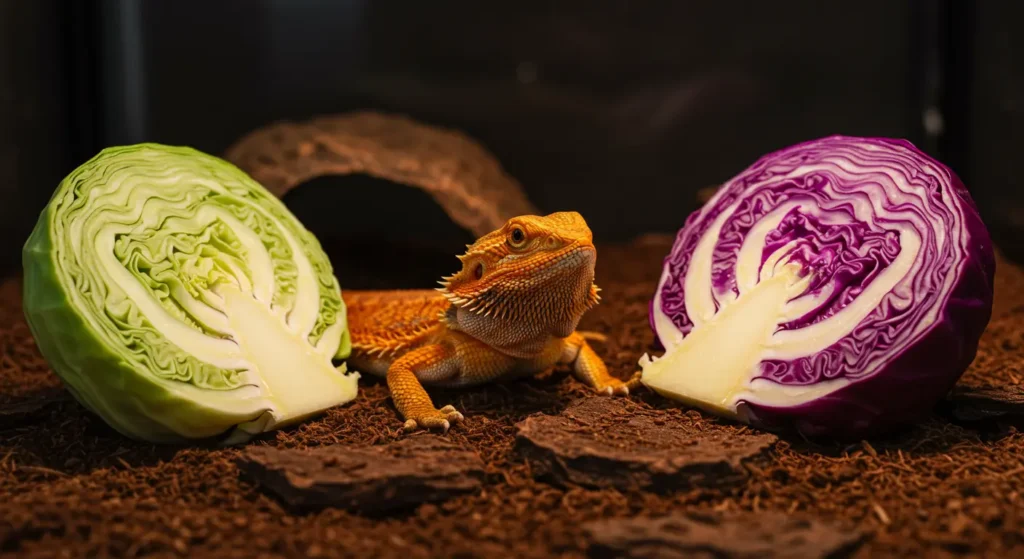
Recommended Portion Sizes and Frequency
Cabbage should only be a small, occasional treat in your bearded dragon’s diet. Experts recommend offering it no more than once every two weeks. A portion should be about the size of the dragon’s head or less—chopped finely and mixed with other greens. Never allow cabbage to dominate the meal, even if your beardie enjoys it. Moderation is essential, as overfeeding can lead to nutrient imbalances. A good rule of thumb is to stick to a varied feeding chart that emphasizes high-calcium greens. When in doubt, consult a reptile veterinarian for personalized advice based on your dragon’s age, size, and health condition.
Warning Signs of Overfeeding Cabbage
Feeding too much cabbage—even if it seems harmless—can cause digestive and metabolic problems in bearded dragons. Common signs of overfeeding include bloating, diarrhea, or visible lethargy. Some dragons may refuse food, become sluggish, or show swelling around the stomach area. These symptoms can point to an upset gut or even the early signs of nutrient deficiency due to poor calcium absorption. If you notice any of these issues, remove cabbage from the diet immediately and offer more fiber-rich, calcium-boosting greens instead. Always watch how your bearded dragon reacts to new foods. Long-term overfeeding of cruciferous vegetables like cabbage can silently damage their health over time.
Choosing the Best Type of Cabbage for Your Beardie
Not all cabbages are created equal when it comes to feeding your bearded dragon. Some types contain higher levels of harmful compounds, while others are slightly safer in moderation. In this section, we’ll compare different cabbage varieties and help you make the best choice for your beardie’s occasional treat.
Green vs. Red Cabbage: Which One is Safer?
When comparing green cabbage and red cabbage, green is generally the safer choice for bearded dragons. It contains slightly fewer oxalates and goitrogens, making it a bit less risky when fed occasionally. Red cabbage, while visually appealing and higher in antioxidants, tends to have stronger goitrogenic effects. This means it may interfere with your dragon’s thyroid health if offered too often. Both types contain similar levels of fiber, vitamin K, and phosphorus, but neither offers a balanced calcium-to-phosphorus ratio. Green cabbage also tends to be easier on digestion when chopped finely and served raw or lightly steamed. If you’re going to offer cabbage as a treat, stick to green cabbage in small, infrequent portions. Red cabbage should be reserved for rare occasions, if at all. Always mix it with calcium-rich greens to avoid imbalances.
What About Napa, Savoy, and Other Types?
Cabbage comes in several forms, and some are less common but still worth considering. Napa cabbage, also called Chinese cabbage, is more tender and has a higher water content. It’s often used in Asian cuisine and is considered one of the safer options for reptiles due to its lower goitrogen level. Savoy cabbage is another variety with crinkled leaves and a milder flavor. It’s easier to chew and digest, making it more suitable for younger or smaller bearded dragons. However, both Napa and Savoy should still be offered in moderation. They don’t provide ideal calcium levels and still carry a small risk due to their cruciferous nature. When experimenting with exotic greens or Asian cabbage types, always introduce them slowly. Watch for any digestive changes or loss of appetite. If your beardie tolerates them well, these can be rotated occasionally as part of a diverse vegetable mix.
Organic vs. Non-Organic Vegetables for Reptiles
When feeding any type of cabbage—or vegetables in general—to your bearded dragon, pesticide exposure is a serious concern. Organic vegetables are grown without synthetic pesticides or fertilizers, reducing the risk of chemical buildup in your reptile’s system. Non-organic cabbage often carries residues that may not be fully removed through rinsing, especially in leafy varieties where chemicals can settle deep into the folds. Over time, this can affect your beardie’s liver or kidneys. While organic produce is ideal, it’s not always accessible. If you use non-organic cabbage, wash it thoroughly under cold water and peel away the outer leaves. Buying from trusted sources and checking for certifications also improves food safety. Clean, pesticide-free vegetables are essential to keeping your bearded dragon healthy—no matter what type of cabbage you choose to serve.
Better Leafy Alternatives to Cabbage in a Bearded Dragon’s Diet
While cabbage can be offered occasionally, it’s far from the best leafy green for your bearded dragon. Fortunately, there are several healthier alternatives that provide better calcium levels and fewer risks. This section highlights the top greens you should prioritize to build a safe, balanced diet for your beardie.
Top Reptile-Safe Greens You Should Prioritize
If you’re looking to improve your bearded dragon’s diet, start with greens that are both safe and nutrient-rich. Dandelion greens are a top choice—they’re high in calcium and low in oxalates, making them ideal for daily feeding. Collard greens also rank highly, offering a great calcium-to-phosphorus ratio along with vitamins A, C, and K. Another excellent option is mustard greens, which are rich in antioxidants and support digestion. These three greens are not only safer than cabbage but also contribute to stronger bones and better overall health. When served raw, fresh, and pesticide-free, they can form the foundation of a nutritious salad mix. Be sure to rotate them regularly and chop them into bite-sized pieces. These staples should make up the bulk of your bearded dragon’s plant intake.
How to Create a Balanced Weekly Feeding Rotation
A consistent and well-balanced feeding schedule is essential for maintaining good health in bearded dragons. Start by offering a mix of high-calcium greens like dandelion and collards five days a week. On two days, you can rotate in occasional treats such as squash or small fruit slices—just keep them limited. Avoid giving the same vegetable every day, as variety prevents nutrient imbalances and boredom. Use a feeding chart or weekly planner to track what you’ve served and plan upcoming meals. Aim for 70–80% plant matter in adult dragons, with the rest coming from live insects. Juveniles will need more protein, but greens should still be introduced early. By following a rotating schedule, you’ll ensure your beardie receives a full range of vitamins and minerals while avoiding excess goitrogens or oxalates.
When to Consult a Reptile Vet for Diet Advice
Even experienced owners sometimes need help with their bearded dragon’s diet. If your pet shows signs of poor appetite, weight loss, bloating, or weakness, it’s time to contact a reptile veterinarian. These specialists can assess your dragon’s overall condition and recommend changes based on age, size, and health history. They may suggest blood tests or fecal exams to check for nutritional deficiencies. It’s also smart to consult a vet before introducing new or exotic foods, especially if your beardie has had issues with digestion. Regular checkups—ideally once a year—help catch problems early. A reptile vet can guide you in adjusting feeding frequency, supplement use, and food variety. Professional input ensures your dragon’s diet stays balanced, safe, and tailored to its specific needs.
Frequently Asked Questions
can bearded dragons eat cabbage every day?
No, bearded dragons should not eat cabbage every day. While it’s not toxic, cabbage contains goitrogens and an imbalanced calcium-to-phosphorus ratio, which can harm your dragon if fed too often. It’s best served occasionally as part of a varied diet.
can bearded dragons eat cabbage and carrots?
Yes, bearded dragons can eat both cabbage and carrots in moderation. However, neither should be a staple food. Carrots are high in vitamin A, and too much can lead to toxicity, while cabbage can affect calcium absorption. Use both as occasional treats.
can bearded dragons eat cabbage seeds?
No, it’s not recommended to feed cabbage seeds to bearded dragons. Seeds are difficult for them to digest and may pose a choking hazard or cause impaction. Stick to soft, leafy portions instead.
Can bearded dragons eat red cabbage?
Red cabbage can be fed sparingly, but it’s not the best option. It contains more goitrogens than green cabbage and may interfere with thyroid health if fed too frequently. Limit it to small, infrequent servings.
Can bearded dragons eat carrots?
Yes, carrots are safe for bearded dragons but should be fed in moderation. They’re best served shredded or chopped and offered once or twice a week. Avoid baby carrots that may contain preservatives.
Can bearded dragons eat purple cabbage?
Purple cabbage, which is often another name for red cabbage, can be eaten occasionally. Like other cabbage varieties, it should be limited due to its goitrogen content and low calcium levels.
Can bearded dragons eat tomatoes?
Tomatoes can be offered occasionally, but they are acidic and low in calcium. Feeding too much tomato can upset your dragon’s stomach. Serve ripe, raw tomato in very small pieces, only once in a while.
Can bearded dragons eat coleslaw mix?
No, pre-packaged coleslaw mix is not safe for bearded dragons. It often contains added preservatives, shredded carrots, and even dressing or cabbage blends that may not be reptile-safe. Always feed fresh, unprocessed vegetables.
Conclusion
So, can bearded dragons eat cabbage? The answer is yes—but only in moderation. While cabbage offers some nutritional benefits like fiber and vitamin K, it also contains goitrogens and an unfavorable calcium-to-phosphorus ratio, which can pose health risks if fed too often. Not all cabbage types are equally safe, and better leafy alternatives like collard greens, dandelion greens, and mustard greens should form the foundation of your dragon’s diet.
By understanding the risks and feeding cabbage occasionally—alongside calcium-rich foods and proper supplementation—you can keep your bearded dragon healthy and happy. When in doubt, always consult a reptile veterinarian for guidance tailored to your pet’s needs.
Feeding is just one part of responsible bearded dragon care. If you’re also upgrading your habitat, don’t miss our full guide to creating the perfect 120-gallon bearded dragon tank setup.

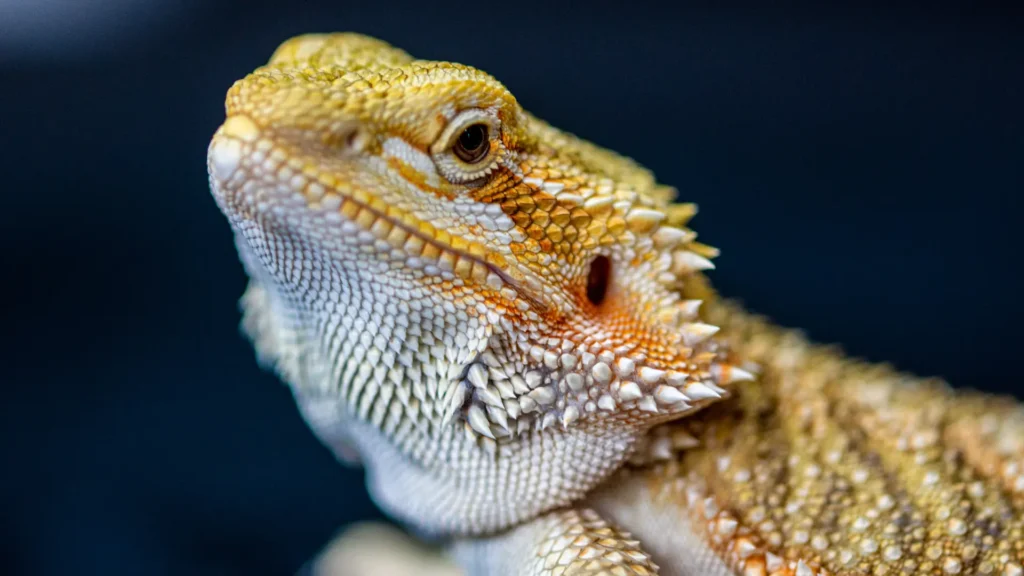
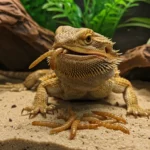
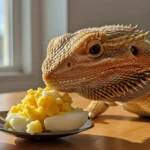
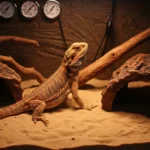
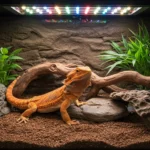
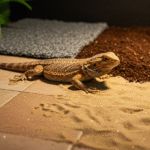
1 thought on “can bearded dragons eat cabbage? The Expert Answer”